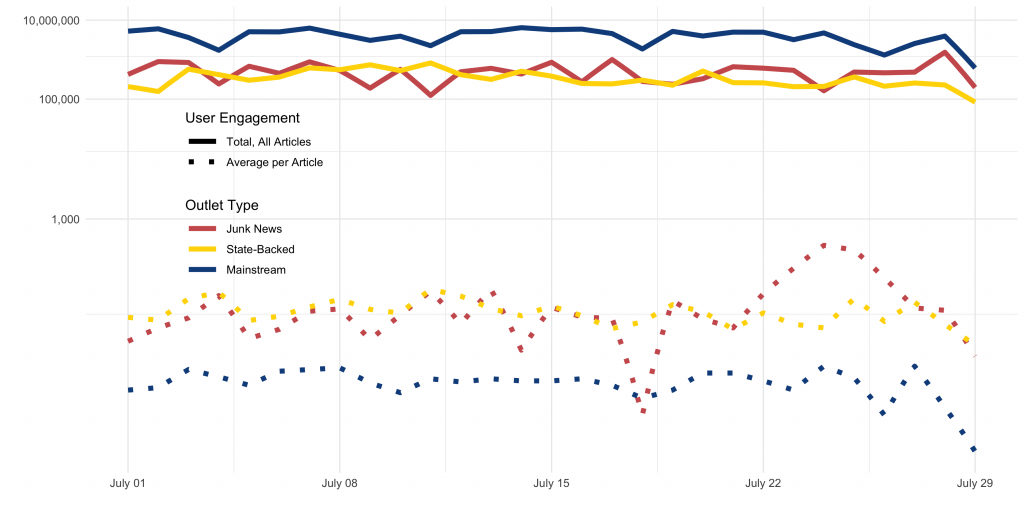Misinformation and professional news on largely unmoderated platforms: the case of telegram
research,
27 May 2022
Coronavirus-specific briefings have now ended as we have transitioned to a general misinformation weekly briefing.
Given the evolving nature of the coronavirus (COVID-19) pandemic—and public understanding of the crises—we provide a weekly briefing about the spread of coronavirus information across multiple social media platforms.

Engagement Trends for the last 28 days. Based on authors’ calculations using data collected 23/07/2020-30/07/2020.
For the seven days prior to 30-07-2020 we find:
For the seven days prior to 23-07-2020 we find:
For the seven days prior to 16-07-2020 we find:
For the seven days prior to 08-07-2020 we find:
For the seven days prior to 01-07-2020 we find:
research,
27 May 2022
post,
20 April 2022
post,
19 April 2022
research,
12 April 2022
